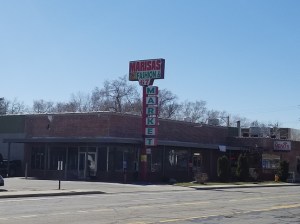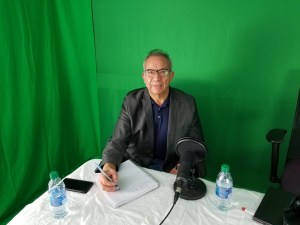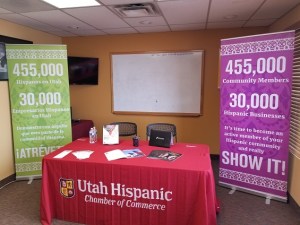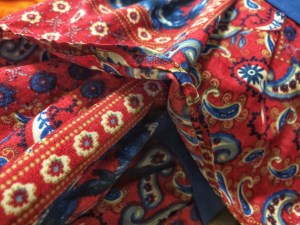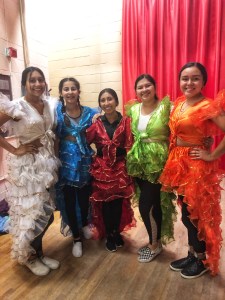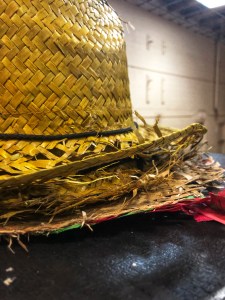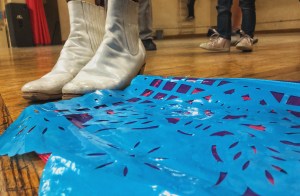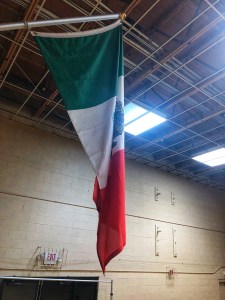Story by CATIE QUIGLEY
Most outdoor spaces are dominated by white people, in the United States and in Utah. That is beginning to change with organizations like Outdoor Afro and Latino Outdoors, which encourage minority communities to participate in nature activities and overcome the systemic barriers that they face.
Until the 1950s, national parks and most outdoor recreational spaces were segregated, further alienating Black people.
Meanwhile, white culture experienced a surge of interest in the outdoors, especially with the Transcendentalist Movement in the 1800s. This cultural shift ultimately led to the barriers that people of color now face in experiencing the outdoors.
Perhaps the biggest barrier faced is the economic challenges. People of color and more diverse communities often have lower income rates, which poses a barrier to outdoor interactions in many ways.
Victoria Ramirez, 26, is a graduate student at Utah State University studying archaeology and working as an archaeologist at Capitol Reef this summer, as well as a member of Latino Outdoors. She talked about how her father worked two jobs and her mother worked a job and took care of the family while she was growing up. This is a common experience for minority families.
Many people of color work several jobs in order to just make ends meet and care for their families. When given the opportunity to spend hard-earned money for outdoorsy hobbies versus something that may be more comfortable, it makes sense to choose the comfortable option that is familiar.
Javier Campos, an avid cyclist and member of Latino Outdoors, discussed the expenses outdoor activities can hold, and why minority communities are often less inclined to buy things like tents or hiking boots or bicycles or climbing gear.
Too often, people have to worry about paying the bills or making a car payment or putting food on the table, Campos said in a Zoom interview. Buying a bike is often seen as a luxury.
Nkenna Onwuzuruoha is a Black woman from Georgia who moved to Utah with very little money. She relied on cycling to commute in Salt Lake City. Though she had little interest in nature when she moved, she gained a passion for biking as she relied on it to get around.
Now an avid cyclist, Onwuzuruoha said she recognizes the differences between biking on the more affluent east side of Salt Lake City, versus the more diverse west side of the Salt Lake Valley.
She talked about how the east side of the Salt Lake Valley has better bike infrastructure, such as bike lanes and ways that cyclists can be more visible on the streets. On the west side, money doesn’t go toward things like bike lanes.
She also said African Americans are encouraged to better themselves economically, but this pressure can lead to neglecting physical and emotional well-being.
“I think sometimes that exists in marginalized communities and communities of color that these [nature activities] are not things that we do, because these are leisurely activities,” Onwuzuruoha said in a Zoom interview. “These are things that help us kind of rise up in the world and kind of secure a certain type of socio-economic status, but you can’t have that really nice socio-economic status or middle-class kind of status unless you’re still healthy, happy and healthy.”
Although she began skiing this year, she said she had to overcome a cultural barrier. “For the longest time,” she said, “I was like, I don’t ski, people like me don’t ski, and that is a narrative I had in my mind.”
Victoria Ramirez, the archaeology student at Utah State University, said she faced the challenges of integrating into a new and predominantly white culture when she moved to Utah from Los Angeles.
“I felt like maybe I had to present myself differently, at least in the sense of like, I’m going to buy Chacos (a type of outdoor sandal) or something like that to fit in with everyone else and not wear my hoops (earrings) and make sure that I’m speaking correctly,” she said. She even started pronouncing her name to make it easier for English speakers to say.
The pressure to fit into white society is prevalent in outdoor culture, especially in Utah, whose population is 90% white and clearly reflected in natural spaces. Jonny Gonzalez, the coordinator of the Salt Lake City branch of Latino Outdoors, said it is common while enjoying the outdoors to encounter white people in groups.
To a person of color, looking different can bring unwanted attention and an awareness of the sense of being other. “It’s just one of those things that on a subconscious level just might give people the feeling of ‘well, do I belong here?’” Gonzalez said in a Zoom interview.
In order to create a sense of belonging for people of color who have an interest in the outdoors, groups like Latino Outdoors and Outdoor Afro have been created. They look for ways to create a space that is welcoming for groups that face specific barriers because of the color of their skin.
These groups often work together to create an intersectional environment that promotes outdoor activity for all people.
Campos said, “I think that’s the biggest point of this group is making sure that people feel heard and seen and understood and given that opportunity. And basically … being told hey, this space is also yours, not just theirs. This space belongs to everyone. And you have and you should have equal and equitable access to it. Regardless of your socioeconomic standing, regardless of your social perception of the sport or the outdoors. This is your space and you can own it.”
Filed under: African American, Environment, Hispanics & Latinos(as), Organizations, Sports & Recreation | Leave a comment »
















